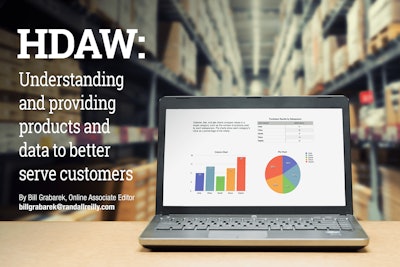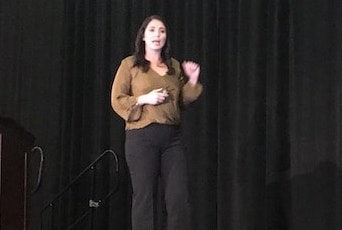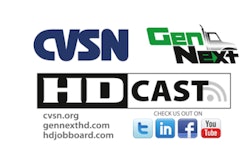
The trucking industry is becoming more technologically advanced at a rapid rate. Many new parts and components provide access to truck data the industry never had before or was difficult to get.
While just keeping up with the new technology and collecting raw data might be enough for some independent aftermarket parts and service providers, being an expert and a resource can pay big dividends for retaining customers and attracting new ones.
“We’re at somewhat of a crossroads. The crossroads is the new products we need to offer, but we also need to think about the future. Think about your business and how you want it to evolve,” said Rich Ferguson, managing director, Ferguson Partners, as part of a session at Heavy Duty Aftermarket Week (HDAW), held last month in Grapevine, Texas.
 Rich Ferguson, managing director, Ferguson Partners
Rich Ferguson, managing director, Ferguson PartnersFerguson mentioned several technology trends that present opportunities for the aftermarket community. Some of the tech is newer than others, but he stressed all require continued technician training to stay on top of it all.
“Fleets and drivers are operating vehicles without knowledge of what you need to do to clean a diesel particulate filter (DPF). We’re going to still need to educate folks. DPF replacement and cleaning still is a growth opportunity for our businesses,” he said.
Another area of growth is automated manual transmissions (AMTs). While less than 20 percent of Class 8 trucks on the road have AMT, “the vast majority of the OEMs” are adopting it, Ferguson said. “Clutch replacement is slightly different and this is an opportunity we need to explore and expand. This is a significant aftermarket service opportunity,” he added.
Ferguson also spoke of electric HVAC units and anti-idle systems now available as aftermarket products. “We need to provide those solutions to our customers,” he said.
Although air disc brakes have been in Europe for several years because of improved stopping distance and lower maintenance cost, U.S. fleets are now adopting them as the higher initial cost is overshadowed by the total cost of ownership, Ferguson said.
He also noted how the remanufactured product offering is expanding because it’s environmentally friendly and cost effective, and how a good-better-best strategy for private label parts “is about serving your customer by having different price points.”
Ferguson mentioned advanced driver assistance systems and electronic braking. “All of these advanced systems are going to require special training and equipment and different parts,” he said.
“This market evolution that’s going on and products you can deliver today is an opportunity. You have areas of expertise that can be marketed,” Ferguson said. “Work with vendors for training and education. Don’t be afraid to talk to fleets about areas you can provide value. It’s all about evolving your business.”
Deciphering data
As heavy-duty trucks become more complex, they can provide more information. That’s a good thing, but only if parts and service providers know what to do with that data and they get it to the right people.
Raw data has almost zero value on its own, said Rob Bradenham, senior vice president, commercial vehicles, Decisiv, during a HDAW workshop. What’s needed is to apply “analytics or intelligence to turn that data into information. Applying expertise … can turn that information into insight,” Bradenham said.
 Rob Bradenham, senior vice president, commercial vehicles, Decisiv
Rob Bradenham, senior vice president, commercial vehicles, DecisivThe last step of turning that insight into action can be a big problem if the provider doesn’t have a connected service ecosystem.
“You can derive great insights from data. ‘There is a problem with this asset, we should do X,’ then it sits in an email inbox of a service director or asset manager and doesn’t make it down to the technician who is trying to do the troubleshooting on that piece of equipment,” he says.
Bradenham acknowledged truck service requires a wide, complex data set for it to be completed effectively and efficiently.
“Today the service data is chaotic. There is data about that truck from the OEM, different suppliers and the sensor data. There are all sorts of telematics, plug-in diagnostics, analytics tools are out there that are selecting, creating and analyzing data. There are call centers that are trying to orchestrate service events across networks that are capturing data on what service is required,” he says.
Compounding the problem is when companies have systems siloed by department, built to “handle their own world,” and don’t share data well as a result, he said.
“There are too many phone calls, voicemails, email chains that might not have the right people on them or too many people on them, delays because somebody didn’t get back with an approval,” Bradenham said. “There’s lots of confusion and errors, which all drive inefficiency and downtime and it [hurts] throughput in your service locations.”
Bradenham added it’s easy to spend money on technology but urged businesses to first take a step back when approaching data technology.
“Ask yourselves, ‘What is the process I am trying to improve? What is the customer need I am trying to address?’ The customer need may not be the [the issue the customer has] right this minute. It’s easy to think the problem of the day … is what my customer needs,” he said. “Adjust your time horizon to not just today or this week, but what are my customers’ needs in the next five years and am I thinking about the right problems for data and analytics.”
One of the goals should be to create value for the customer with the data that is being collected and connect to the service ecosystem, which is being driven by the customer, he said.
 Lindsay Duran, chief marketing officer, Zilliant
Lindsay Duran, chief marketing officer, ZilliantDuring another HDAW workshop, Lindsay Duran, chief marketing officer, Zilliant, explained how data can lead to improved pricing decisions and increased sales.
Duran urged independent aftermarket distributors to use prior data sales to increase the likelihood of future sales by identifying customer segments or product categories in which sales levels recently have shifted and determine the underlying reason. The reasons, for example, could be seasonal or a customer switched truck brands.
When the cause isn’t so easy to find, the distributor’s data becomes more important. The sales team can use data research to find other possible sales opportunities and to be better armed for sales calls made to regain lost business.
Duran also noted the advantages of using data to develop pricing strategies and suggested a pricing matrix.
The matrix would include categories for cash purchasers and small, medium and large customers with walk-in, order and override pricing rates.
Additionally, once a matrix is built, Duran said distributors should continue evaluating their sales data to make sure their pricing strategies are correct.
A faulty matrix can cost a distributor a lot of money but a good one will “make money fall from the sky,” she said.











